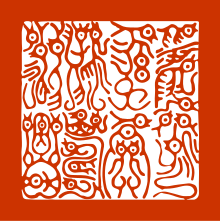
Back Sceau de l'Héritage du Royaume French 伝国璽 Japanese ព្រះរាជត្រានៃចក្រភព Cambodian 전국옥새 Korean Хятадын эзэн хааны тамга Mongolian Jadeseglet NB Императорская печать Китая Russian Kinas kejserliga sigill Swedish சீன இராசமுத்திரை Tamil ราชลัญจกรจีน Thai
This article includes a list of general references, but it lacks sufficient corresponding inline citations. (October 2016) |
| Heirloom Seal of the Realm 傳國璽 传国玺 | |
|---|---|
 | |
| Armiger | Imperial China |
| Adopted | 221 BC |
| Motto | 受命於天 既壽永昌 (Shòumìng yú tiān jì shòu yǒngchāng, "Having received the Mandate from Heaven, may (the emperor) lead a long and prosperous life.")
受命 |
| Use | Official seal of the state |
| Heirloom Seal of the Realm | |||||||||||||||||||||||||||||||
|---|---|---|---|---|---|---|---|---|---|---|---|---|---|---|---|---|---|---|---|---|---|---|---|---|---|---|---|---|---|---|---|
| Traditional Chinese | 傳國璽 | ||||||||||||||||||||||||||||||
| Simplified Chinese | 传国玺 | ||||||||||||||||||||||||||||||
| |||||||||||||||||||||||||||||||
The Heirloom Seal of the Realm (traditional Chinese: 傳國玉璽; simplified Chinese: 传国玉玺; pinyin: chuán guó yù xǐ), also known in English as the Imperial Seal of China, was a Chinese jade seal allegedly carved out of the Heshibi, a sacred piece of jade.[1] The Seal was created in 221 BC, shortly after Qin Shi Huang unified China and established the Qin dynasty, China's first imperial dynasty. The Heirloom Seal served as the imperial Chinese seal throughout the next millennium of Chinese history, and its possession was seen as a physical symbol of the Mandate of Heaven.
The Heirloom Seal was lost around the end of the Tang dynasty (618–907) or during the Five Dynasties and Ten Kingdoms period (907–960).
- ^ The Complete Collection of Treasures of the Palace Museum, Beijing 30: Imperial Seals and Signets - Gugong Bowuyuan Cang Wenwu Zhenpin Quanji 30: Xi yin (Taiwanese Chinese) – 2008. by Beijing Palace Museum. ISBN 9620753453, ISBN 978-9620753459
© MMXXIII Rich X Search. We shall prevail. All rights reserved. Rich X Search